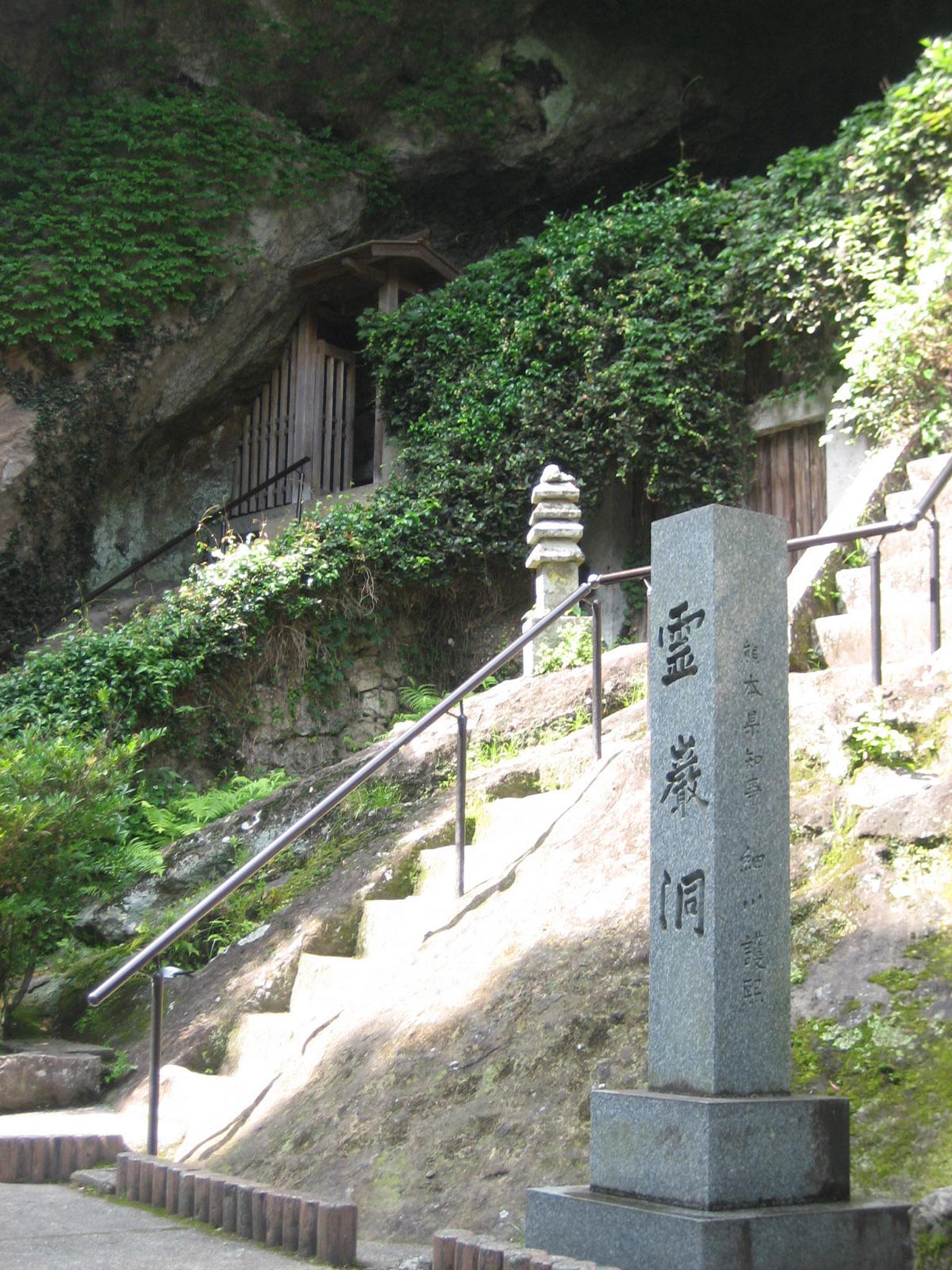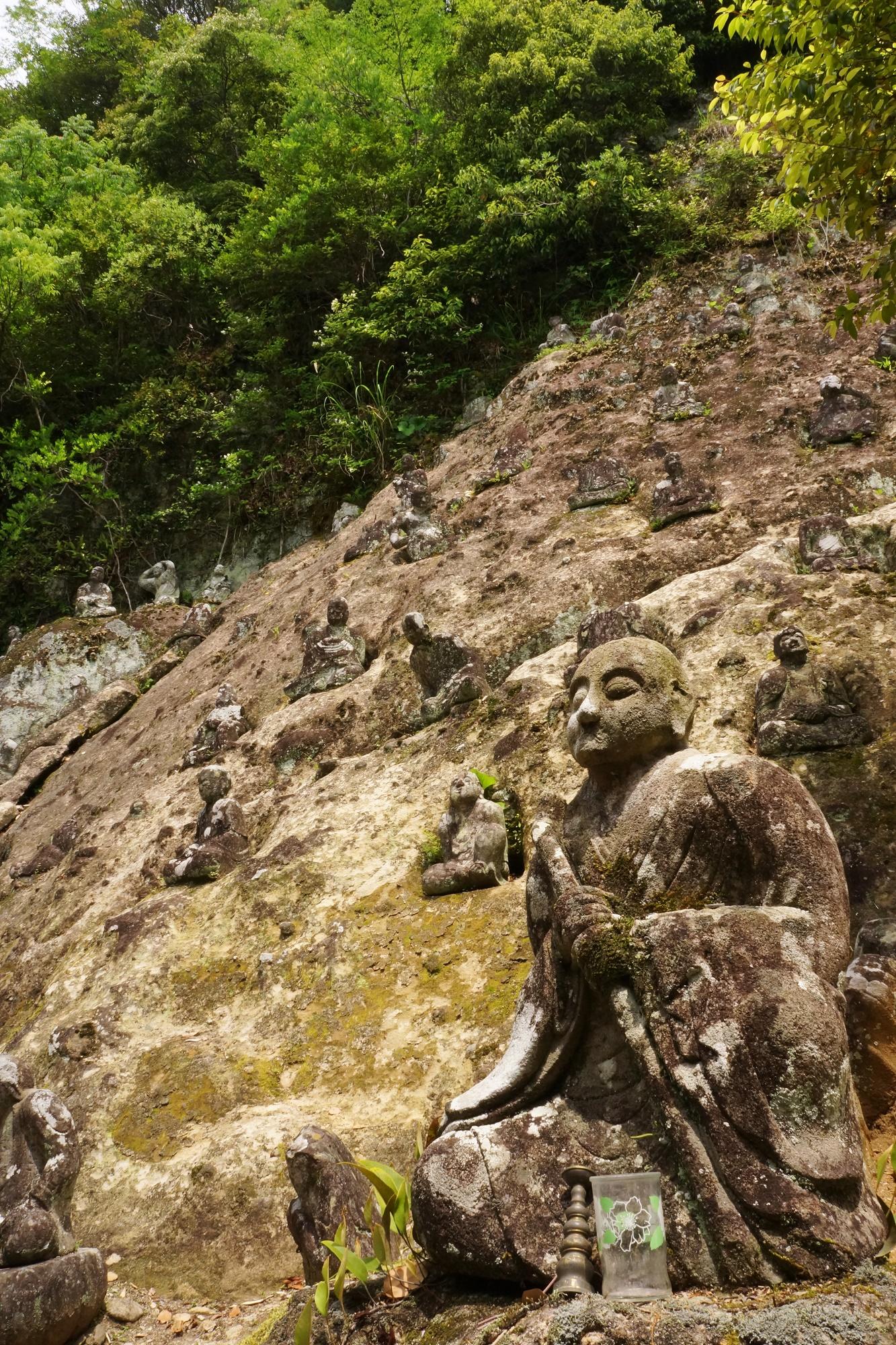Reigando Cave is famous as the place where legendary swordsman Miyamoto Musashi (1584–1645) spent the last two years of his life. It is located in the precincts of Unganzenji Temple, a Zen temple founded in the Nanbokucho period (1336–1392) by Toryo Eiyo, the Chinese priest who first brought Zen to Japan.
Next to the current temple building, which dates from around 50 years ago, is a spring where water bubbles up from a moss-covered stone. Visitors can drink from the same water source as Musashi.
Meiji-era Vandalism
On the way to the cave is a mossy hillside dotted with seated stone figures, many of them headless. These are the 500 rakan (arhats), the disciples of Buddha who are often depicted with puzzled, even comical expressions. They were presented to the temple by Fuchidaya Gihei, a local merchant. He had them carved in Saga over a 24-year period in the early eighteenth century (thus they were not here when Musashi was in residence). They were vandalized in the early Meiji era (1868–1912) when the government denounced Buddhism as a foreign import that was necessarily inferior to Japan’s native Shinto beliefs.
The Death of Musashi
Already in his late 50s when he moved to Kumamoto, Musashi knew that he was approaching the end of his life. It was here that he composed The Book of Five Rings, a work that serves as a practical guide to swordsmanship and to life. There was nothing incongruous about Musashi retiring to a Zen temple. He saw sword-fighting and Zen as similar and complementary practices that led to the finding of the true self, as expressed in the phrase kenzen-ichinyo: “The sword and Zen are one.” Musashi is said to have meditated while sitting on top of the large rock in the cave. In his day there were fewer trees on the mountainside in front of the cave, so he would have been able to see all the way to the sea in the west.







